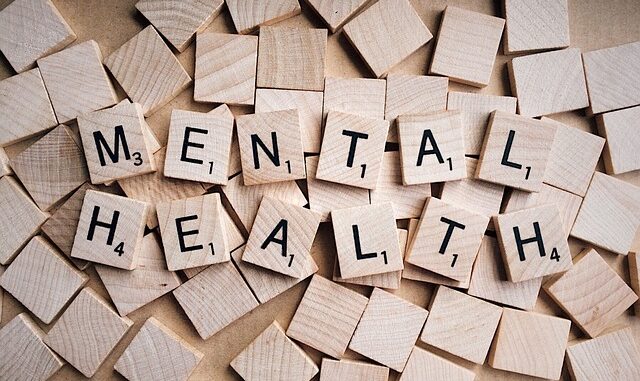
Summary
A new global study reveals a strong link between chronic pain and mental health issues. 40% of adults with chronic pain experience significant depression and anxiety. The study emphasizes the urgent need for integrated treatments and routine mental health screenings in pain management.
** Main Story**
Okay, so I saw this fascinating study that just came out, and it’s kind of a game-changer when you think about how we treat chronic pain. Published in JAMA Network Open, it really highlights the mental health burden that often goes hand-in-hand with chronic pain. We’re talking serious numbers here – about 40% of adults dealing with chronic pain also experience significant depression and anxiety. It’s more than just feeling down because you’re in pain; it’s a real, diagnosable issue that needs to be addressed. It seems so obvious, doesn’t it?
The Global Picture
This wasn’t some small, local study either. We’re talking a meta-analysis, pulling data from 376 different studies across 50 countries, encompassing nearly 350,000 patients. That’s a huge sample size, really lending weight to the findings. What did they find? Well, high rates of clinical depression and anxiety – I’m talking close to 40% for each. And, let’s be real, that statistic is likely to understate the extent of the problem.
Chronic pain is so widespread, it can be hard to grasp its impact. When you dig deeper, it becomes even more apparent that something needs to change. The analysis revealed a correlation between chronic pain and mental health conditions. Symptoms of depression and anxiety were the most prevalent, affecting 39% and 40% of patients, respectively. This really drives home that the psychological distress is not just a reaction to physical discomfort, it’s a serious health concern.
Who’s Most At Risk?
Interestingly, the study also pointed out some vulnerable populations. Women, younger adults, and individuals with fibromyalgia seemed to be at a higher risk of experiencing depression and anxiety alongside their chronic pain. Makes sense, in a way. You see a lot of these people in pain management groups, or maybe that’s just me. Anyway, it really underscores the need for tailored interventions and support for these groups. And, given the numbers, doesn’t it make sense to do more in the way of early intervention?
The Two-Way Street
The thing is, chronic pain and mental health, it’s a complex dance, isn’t it? Pain can absolutely disrupt sleep, ratchet up stress, and pull you down into depression. But, then again, if you’re already struggling with anxiety, that can actually increase your sensitivity to pain. It’s like a vicious cycle, and it’s why we can’t just treat these things as separate issues. I remember working with a patient a few years back, she had terrible back pain, but it turned out the source was more emotional than anything.
Time for a Change
So, what’s the big takeaway here? Well, I think it’s a real call to action. We need to rethink how we approach pain management. Too often, studies exclude patients with co-occurring mental health issues, which means we’re missing a huge piece of the puzzle. You can see why it would make research difficult. So many confounding factors! But, if we don’t address the mental health component, are we really providing effective care? And, of course we’re not.
A Roadmap for Better Care
What can we do? A few things, really:
-
Routine Screening: I mean, it’s basic, but make sure you’re screening chronic pain patients for depression and anxiety. Catching it early makes a world of difference.
-
Integrated Treatments: We’ve gotta move towards integrated treatment programs. Think CBT, mindfulness-based stress reduction, medication management. A comprehensive approach is key.
-
Access to Specialty Care: Far too often, folks struggle to access the specialized care they need. Let’s break down those barriers and get people into multidisciplinary pain clinics and mental health services.
-
Innovative Therapies: The more research and development we put into the chronic pain and mental health conditions the better! Brain stimulation techniques are looking promising.
Ultimately, it’s about recognizing that chronic pain isn’t just a physical issue; it’s a complex biopsychosocial problem. If we can treat both the body and the mind, then the million of individuals affected can be provided with a significantly better quality of life.


Integrated treatment? So you’re saying my yoga instructor was right all along, and downward dog is actually a viable alternative to my prescription meds? Asking for a friend, of course.
That’s a great point! While downward dog might not replace prescriptions entirely, the mind-body connection in yoga can definitely be a powerful tool in managing pain and improving mental well-being. It’s fantastic that your yoga instructor is emphasizing integrated wellness! Perhaps a combination is the answer? What other poses do they recommend?
Editor: MedTechNews.Uk
Thank you to our Sponsor Esdebe
Given the study’s emphasis on integrated treatment, are there specific examples of successful programs combining physical and mental health interventions for chronic pain that have demonstrated significant improvements in patient outcomes?
That’s a crucial question! The study highlights the effectiveness of integrated programs, and while I don’t have specific program names at my fingertips, research often points to CBT combined with physical therapy as a successful model. Does anyone in the community have examples of programs or centres they’ve found helpful?
Editor: MedTechNews.Uk
Thank you to our Sponsor Esdebe
40%? Gosh, if we start screening everyone for depression and anxiety alongside chronic pain, won’t the waiting rooms need mood-boosting bouncy castles? And could the therapists prescribe extra-strength hugs? Asking for a friend who’s also a statistic.
That’s a funny thought! Bouncy castles might be a bit much, but creating a more welcoming and supportive environment is definitely key. Perhaps comfortable seating and calming artwork are a good start? Maybe we could look at therapy dogs as a start? What do you think your friend would appreciate?
Editor: MedTechNews.Uk
Thank you to our Sponsor Esdebe